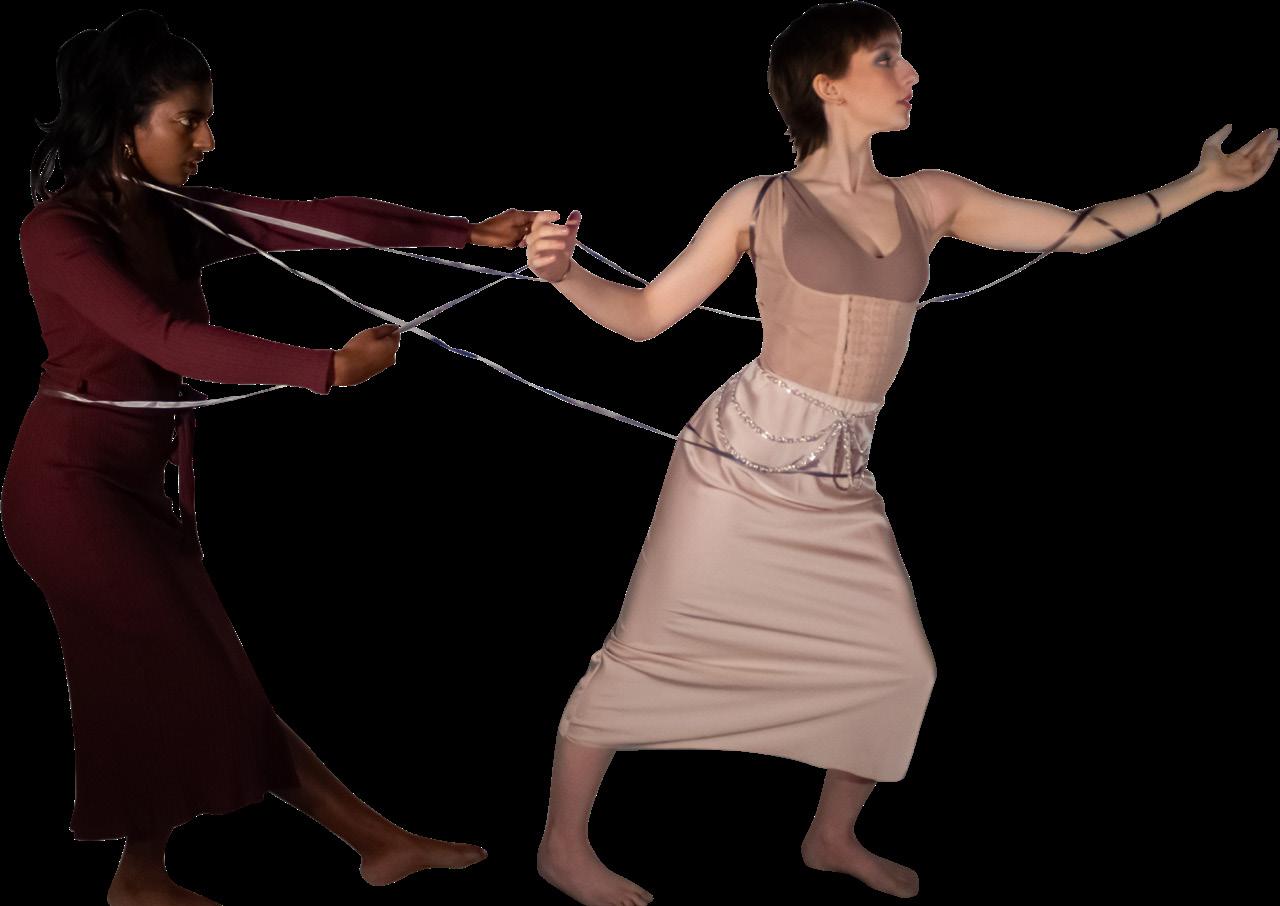
4 minute read
POLITICAL IDENTITY LET’S GET SECURE: A LOOK AT ATTACHMENT STYLES
LET’S GET SECURE: A LOOK AT ATTACHMENT STYLES
STYLE: HALEY POAG, MARIA VITALE, & KATHRYN REMY WORDS: CHLOE WEST & NAVYA KALIA PHOTO: CELIA LOCHKOS GLAM: MORGAN LYNCH
Advertisement
Without knowing it, your current relationships may mimic your earliest relationships with your parents. This concept is known as attachment theory, which outlines the various dynamics between an infant and a caregiver and their influence on adult relationships.
This theory explains the emotional bond between two people and is categorized through four attachment styles: secure, anxious-preoccupied, dismissive-avoidant and fearfulavoidant. To a certain extent, one person embodies multiple attachment styles, and having an awareness of their primary attachment style is the first step towards having more secure, fulfilling relationships.
Individual attachment styles are formed at a young age and can stem from different experiences. For example, anxious-preoccupied attachment style is caused by a lack of parental support, underappreciation and fear of abandonment. It can develop from inconsistency in caregiving or parents relying on their children for comfort. Adults who suffer from this attachment style may think highly of others but have low self-esteem and may fear loneliness, resentment and rejection. When in romantic relationships, those with anxious-preoccupied attachment are often jealous and possessive of their partners, while in platonic relationships, they might crave attention and are overly sensitive.
Caregivers who are often stern and emotionally detached from their children typically frown upon individual expression, feelings and passion. Dismissive-avoidant attachment style develops from parents who were not present in a child’s life or were often overwhelmed with caregiving responsibilities. Their children might often be told to toughen up, and as a result, grow up faster than expected. This can lead them to believe they must be their own support system.
As adults, those with dismissiveavoidant attachment style may fear intimacy and lack of control. In romantic relationships, they might shut their partner out when things get serious, become frustrated and try to end the relationship. Similarly, in platonic relationships, they may look independent but are often distancing themselves.
The fearful-avoidant attachment style contains aspects of both the anxiouspreoccupied and the dismissive-avoidant styles. Those with this attachment style may crave affection and are hypersensitive to threats, yet they most likely avoid intimacy. This attachment style is formed when a child experiences some kind of trauma, such as abuse, hostility or alarming parental behavior. For example, if the parent themselves is depressed or unable to provide comfort, the child can sense this, which creates anxiety for them. Ultimately, fearfulavoidants have the basic desire for intimacy that all humans do, however, their earliest relationship has taught them to fear the source of that intimacy.
No matter what attachment styles a person might have, it’s possible to grow and develop a more secure attachment style in relationships. Adults who embody a secure attachment have high self-esteem, are able to better communicate their emotions and feel safe seeking support, which allow them to build healthy, long-lasting relationships.
As children, secure individuals are happy in the presence of their caregiver, and when scared, they seek out their caregiver for support. In a secure attachment style, children feel comfortable to explore new things, since they perceive their caregiver as a safe base they can return to. This sense of confidence in oneself, as well as with other people, is an important characteristic to a secure attachment style.
However, to become secure with relationships, a person must first discover, then accept, their existing attachment styles. Oftentimes, people feel ashamed of their behavior and insecurities, which generally only worsens them. Through the process of self-healing, the greatest realization is that one’s coping mechanisms protected them at one point in their life. In other words, certain behaviors helped the person in the past deal with their own form of trauma. Eventually, however, these mechanisms are no longer necessary and can become damaging. Therefore, by understanding and accepting one’s coping mechanisms and attachment style, the person can begin to let go and develop more productive behaviors and beliefs.
For one, individuals can build their self-esteem by investing in their health and well-being, nurturing their interests and engaging in positive self-talk. They should also pay attention to their reactions and behaviors in their relationships. This will help reveal any emotional triggers or damaging thought processes that need remedying.
For example, for those with dismissiveavoidant attachment, it would be beneficial to grow comfortable with depending on other people. This can be achieved by allowing others to help them with problems or tasks they would normally deal with alone. In addition, they can develop their communication skills and try to share their feelings with significant others or friends and family.
Similarly, anxious-preoccupied people can work on communicating their thoughts, concerns and fears with others. This may help alleviate some relationship anxiety and allow the other person to understand the anxiouspreoccupied person’s mind. It would also be helpful to realize that rejection is inevitable but doesn’t affect one’s self-worth.
For fearful-avoidants, while all of the above suggestions are useful, specifically look at the mindfulness of one’s decisions and thoughts surrounding relationships. To help understand one’s existing attachment style and work towards a more secure one, some people may also find therapy extremely productive.
Ultimately, the path towards a secure attachment requires time, patience and self-reflection. However, this investment is worth it, as it will help people improve their relationships with other people as well as themselves.











